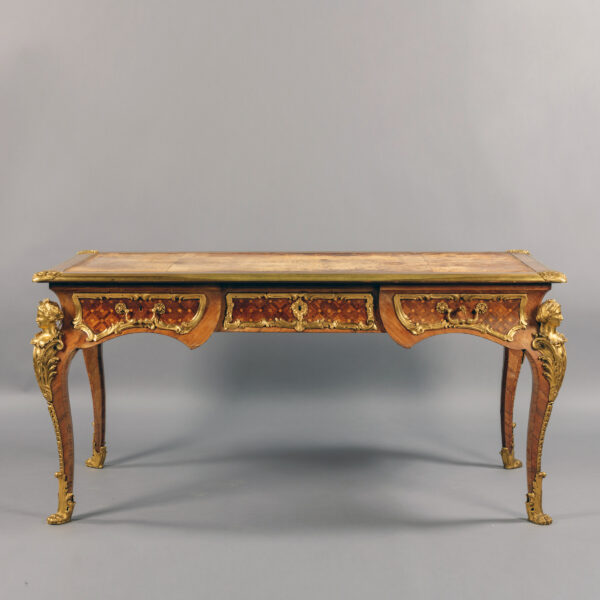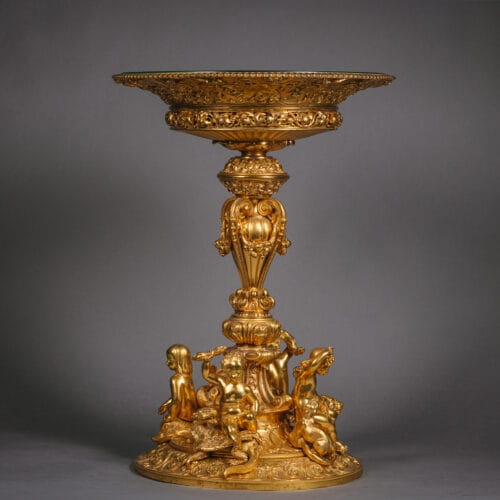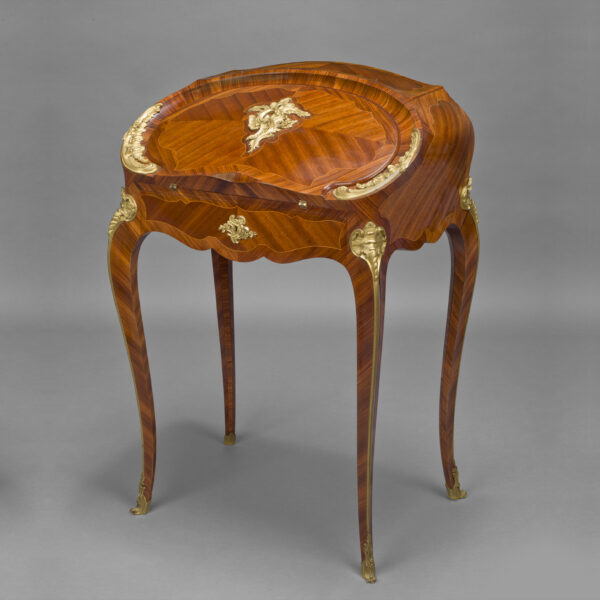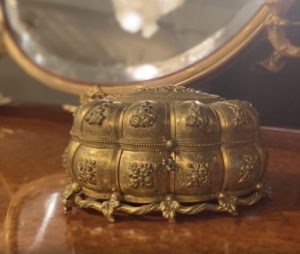Cueunières, Louis-Jean
A Louis XIV Style Gilt-Bronze Mounted Mahogany Bureau Plat
£45,000
A Louis XIV Style Gilt-Bronze Mounted Mahogany Bureau Plat, By Cueunières, Paris. After the Model by Charles Cressent. Stamped to underside 'L. CUEUNIERES...
Dimensiones
Height: 81 cm (32 in)Width: 181.5 cm (72 in)
Depth: 94 cm (38 in)
Descripción
A Louis XIV Style Gilt-Bronze Mounted Mahogany Bureau Plat, By Cueunières, Paris. After the Model by Charles Cressent.
Stamped to underside ‘L. CUEUNIERES JNE / ÉBÉNISTE’
The original gilt-embossed tan leather top surround by an oval moulded gilt-bronze edge. This fine bureau plat has the nice distinction of functioning drawers to both sides making it useful as a partners desk or library table. The angled as headed by sculptural gilt-bronze busts of classical maidens and the sides are centred by bacchic masks. The veneers of precious timber of attractive colour. The front right drawer is fitted with a stationary tray.
This fine and large bureau plat is a late nineteenth century variation of a famous model of writing table made by Charles Cressent (1685-1768), marchand-ébéniste and sculpteur. Charles Cressent is indisputably the most representative craftsman of the French Régence period of the 1720s when fashion started to turn to furniture finished with relatively simple wood veneers, but fitted with gilt-bronze mounts of increasingly sculptural quality and splendour.
For writing-tables, Cressent favoured large figural corner mounts of female busts, atlas figures or soldiers. He made at least least five bureaux plat with classical maiden corner mountings, most similar to the present being one is in the J. Paul Getty Museum (inv. 67.DA.10), previously exhibited at the Exposition Universelle in Paris in 1900.
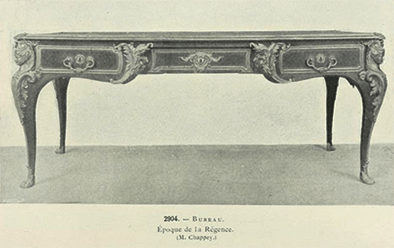
The Cressent Bureau Plat in the J. Paul Getty Museum (inv. 67.DA.10), pictured in the Exposition Universelle in Paris in 1900 as “Collection de M. Chappey.” In exhibition catalogue “Catalogue officiel illustré de l’exposition rétrospective de l’art française des origine à 1800,” no. 2904.
This bureau plat is presented in good original unrestored condition.
Fecha
Alrededor de 1890
Origen
Francia
Medio
Gilt-Bronze & Mahogany
Firma
Stamped to underside 'L. CUEUNIERES JNE / ÉBÉNISTE'
Louis-Jean Cueunières worked from 10, Rue Villehardouin, Paris, in the last quarter of the nineteenth century, producing items of exceptional quality often after eighteenth century examples. He was the son of a cabinetmaker, Jules Cueunières who made “ébénisterie genre boule et bois de rose” from premises at 234 Faubourge St. Antoine and registered a patent “pour une table à jeux à développement mécanique spontané” in 1853.
Cueunières the younger was awarded a silver medal at the 1900 Paris Exhibition and his furniture was praised by the jury for the care and skill with which it was made. He exhibited two cylinder bureaux, a bookcase, a dressing table and a regulator clock. A number of pieces by Cueunières are recorded in the collection of the late art collector and furniture historian Pierre Lecoules.
François Linke was so impressed by the quality of Cueunières work that he bought several bronze master patterns from the Cueunières workshops for his own use in November 1902. This coincides with an auction of furniture from Maison L. Cueunières which indicates that the firm ceased trading at this time. Le Journal newspaper of 9th December 1902 records :
“Vente Cueunières. — Salle numéro 1, par le ministère de M. Lecoq, avait lieu la vente de meubles d’art provenant de la maison L. Cueunières. Beaucoup de monde pour beaucoup de beaux meubles, parmi lesquels je cite un grand bureau à cylindre de style Louis XVI, en bois de rose et amaranthe, orné de bronzes très finement ciselés; ce meuble, dont l’original est au musée des Archives, a trouvé acquéreur à 4,900 fr.”
Literature :
Ledoux – Lebard, Denise. ‘Les Ébénistes du XIXe siècle’, Editions de L’Amateur, (Paris), 1984; p. 142.
Mestdagh, Camille. ‘L’Ameublement d’art français : 1850-1900’, Editions de l’Amateur, (Paris), 2010; p. 192.
Payne, Christopher, ‘Paris Furniture : the luxury market of the 19th century’, Editions Monelle Hayot, 2018, pp. 305-306.
Mestdagh, Camille. ‘L’Ameublement d’art français : 1850-1900’, Editions de l’Amateur, (Paris), 2010; p. 192.
Payne, Christopher, ‘Paris Furniture : the luxury market of the 19th century’, Editions Monelle Hayot, 2018, pp. 305-306.
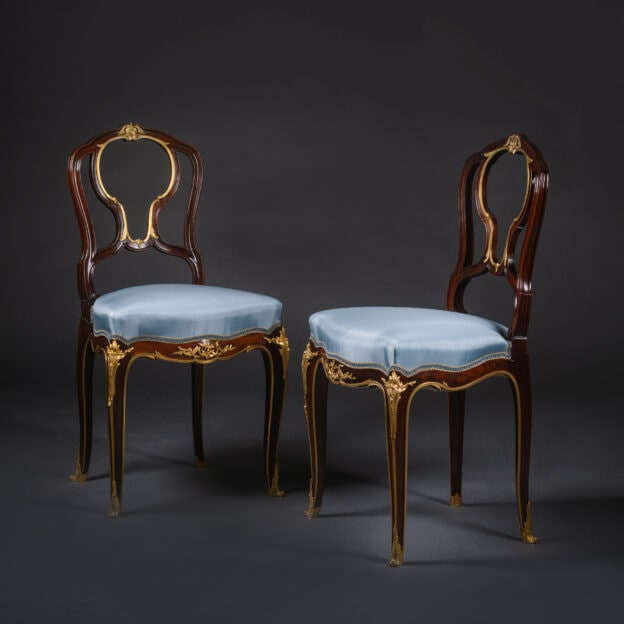




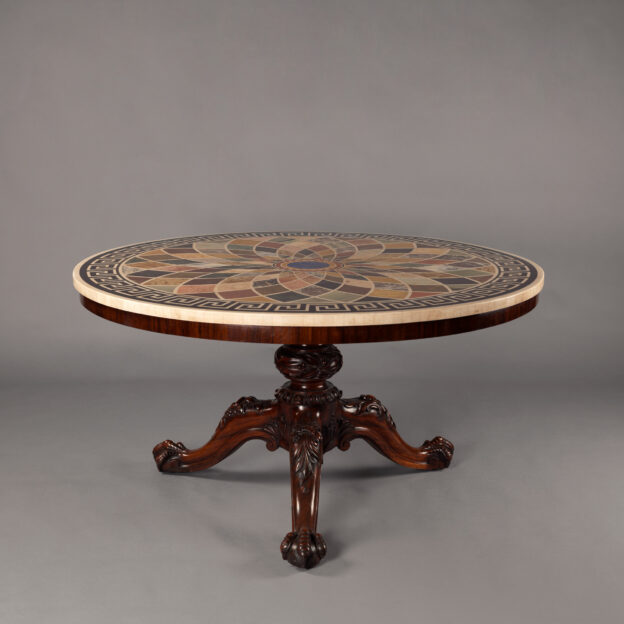
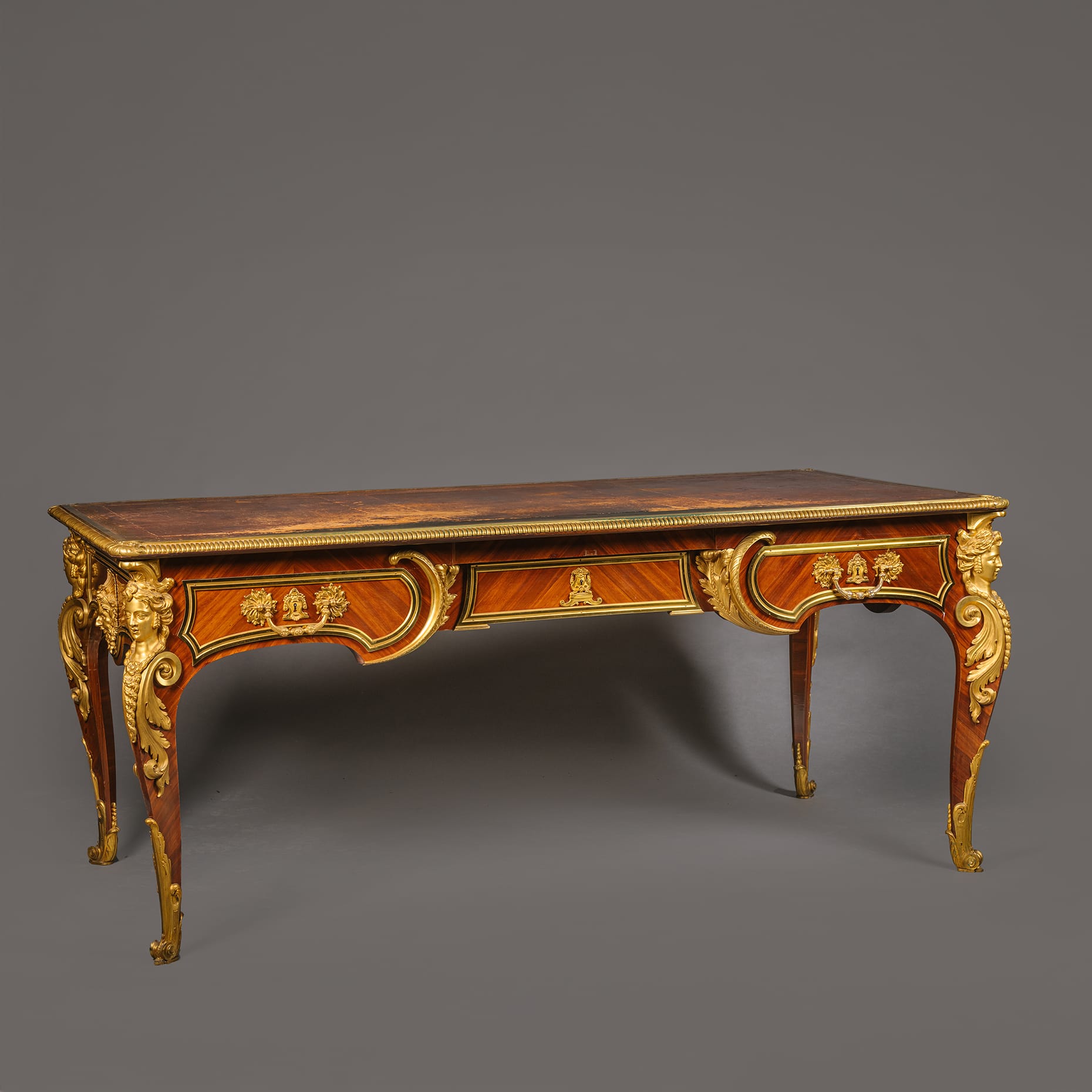
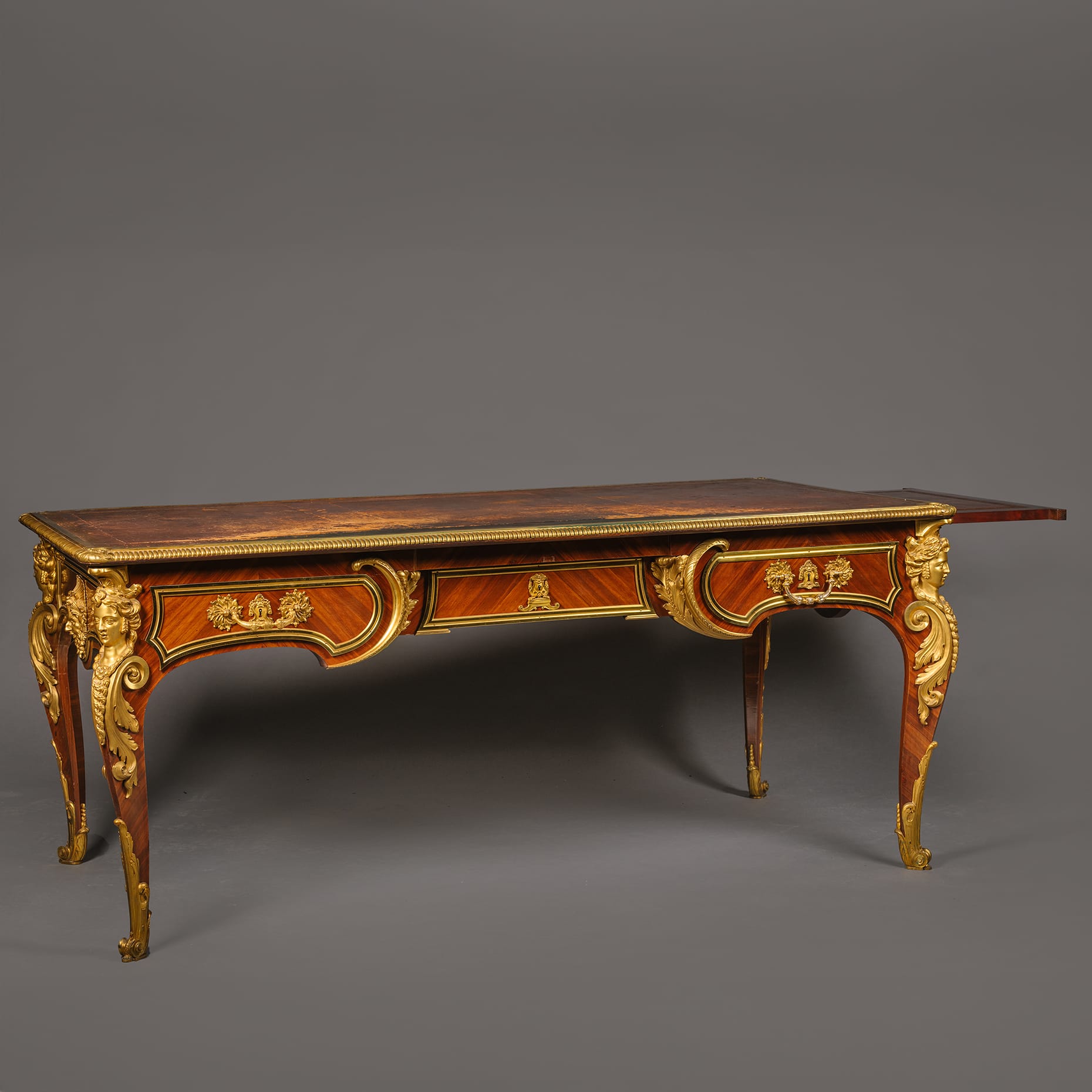
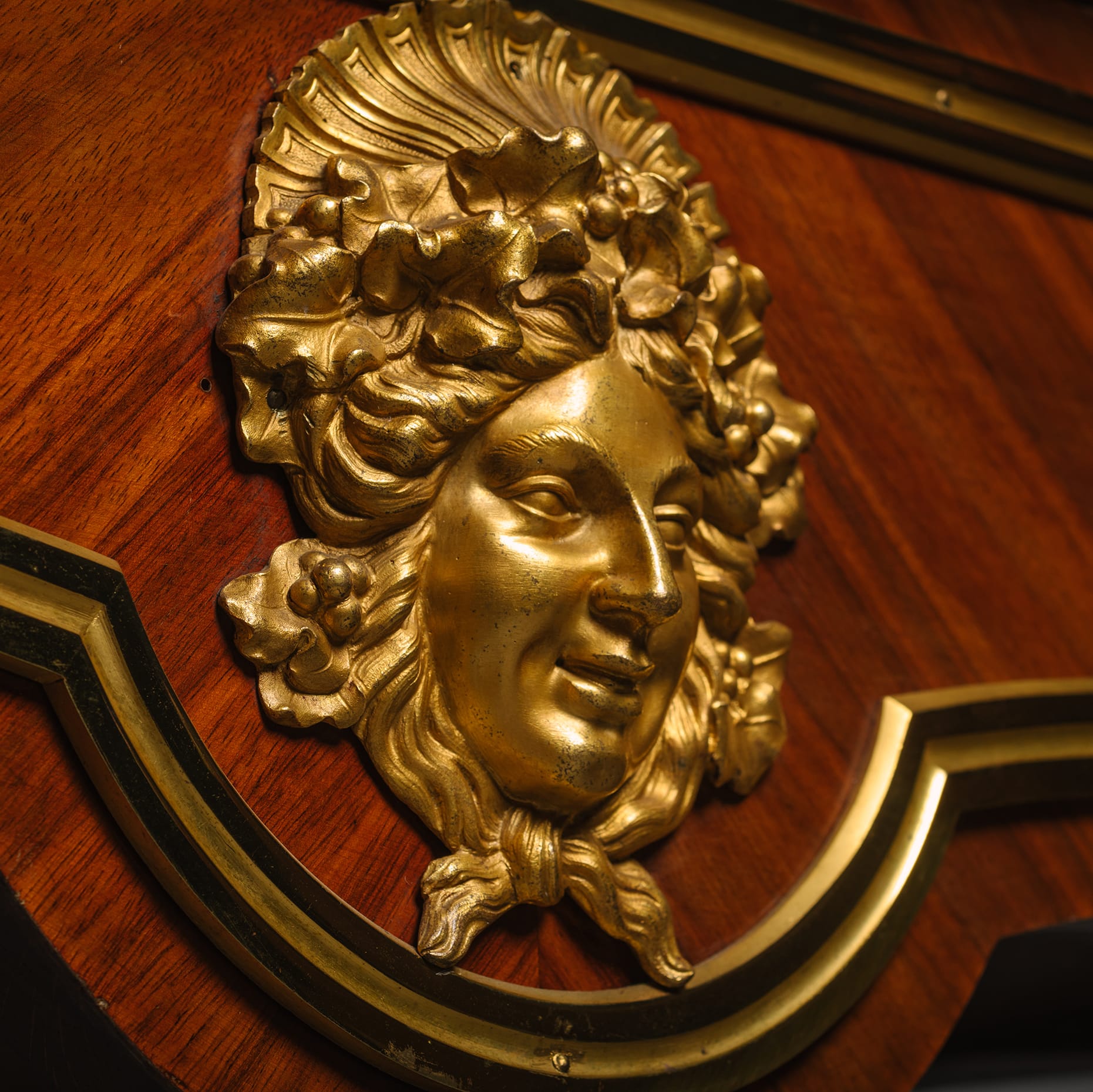
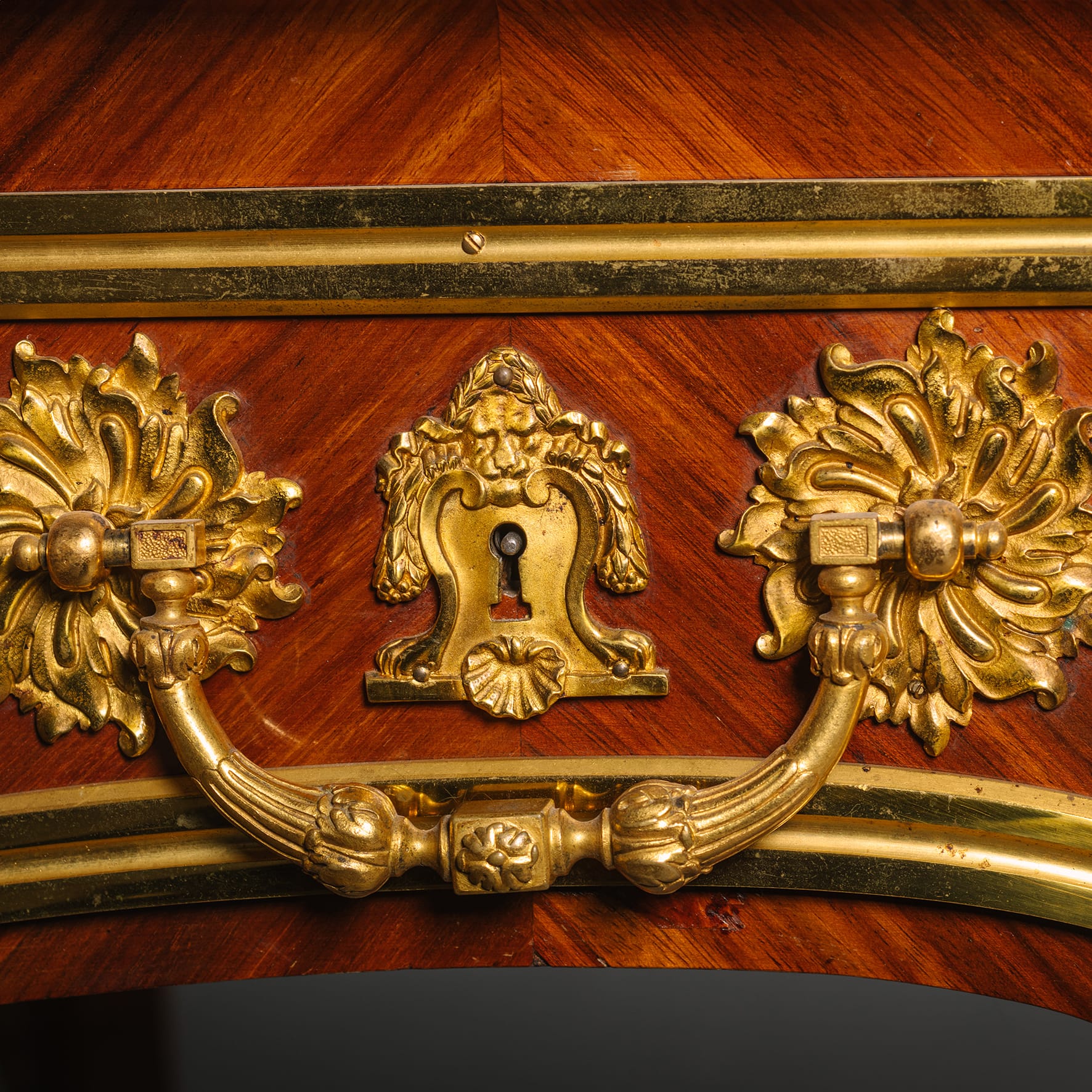
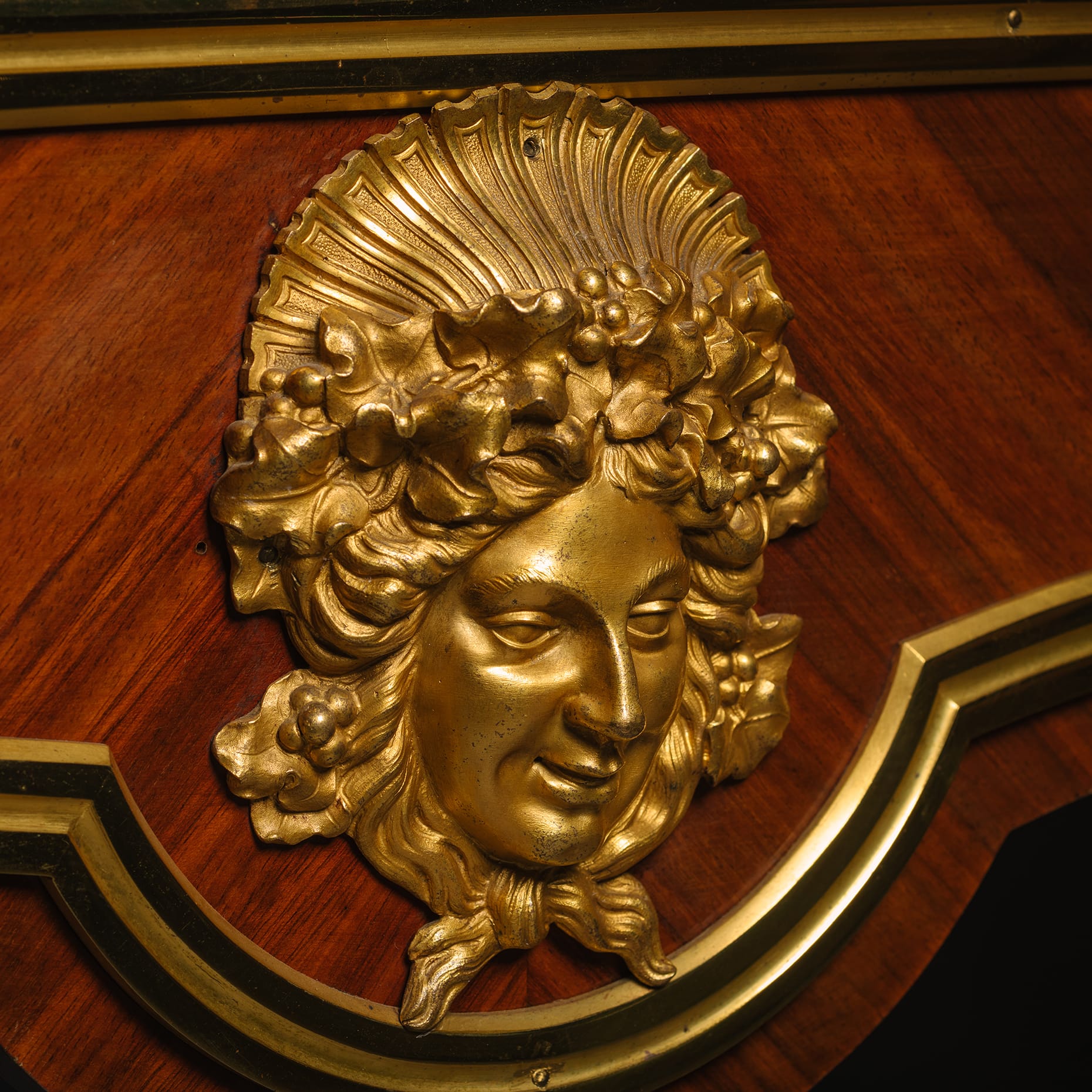
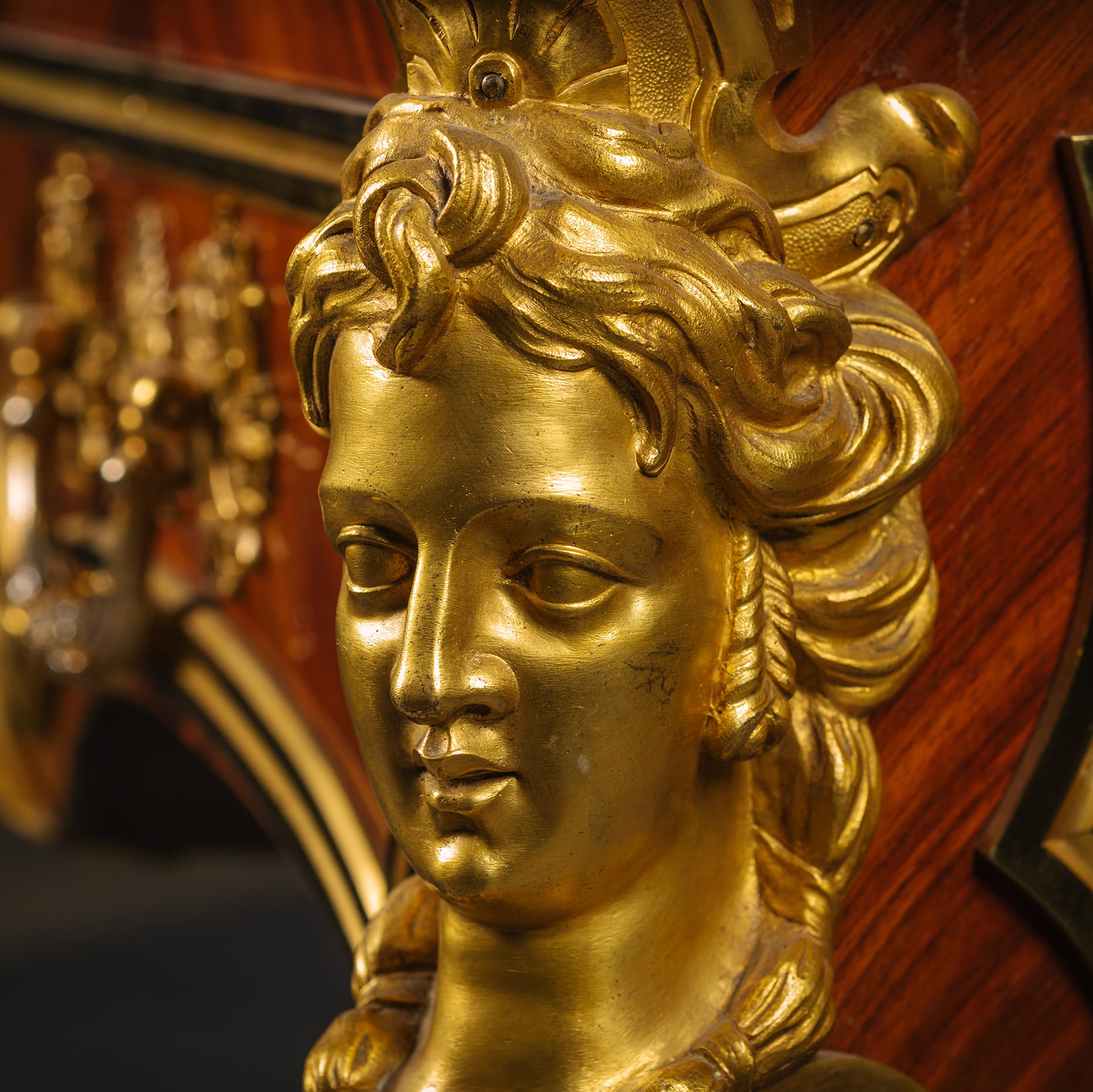
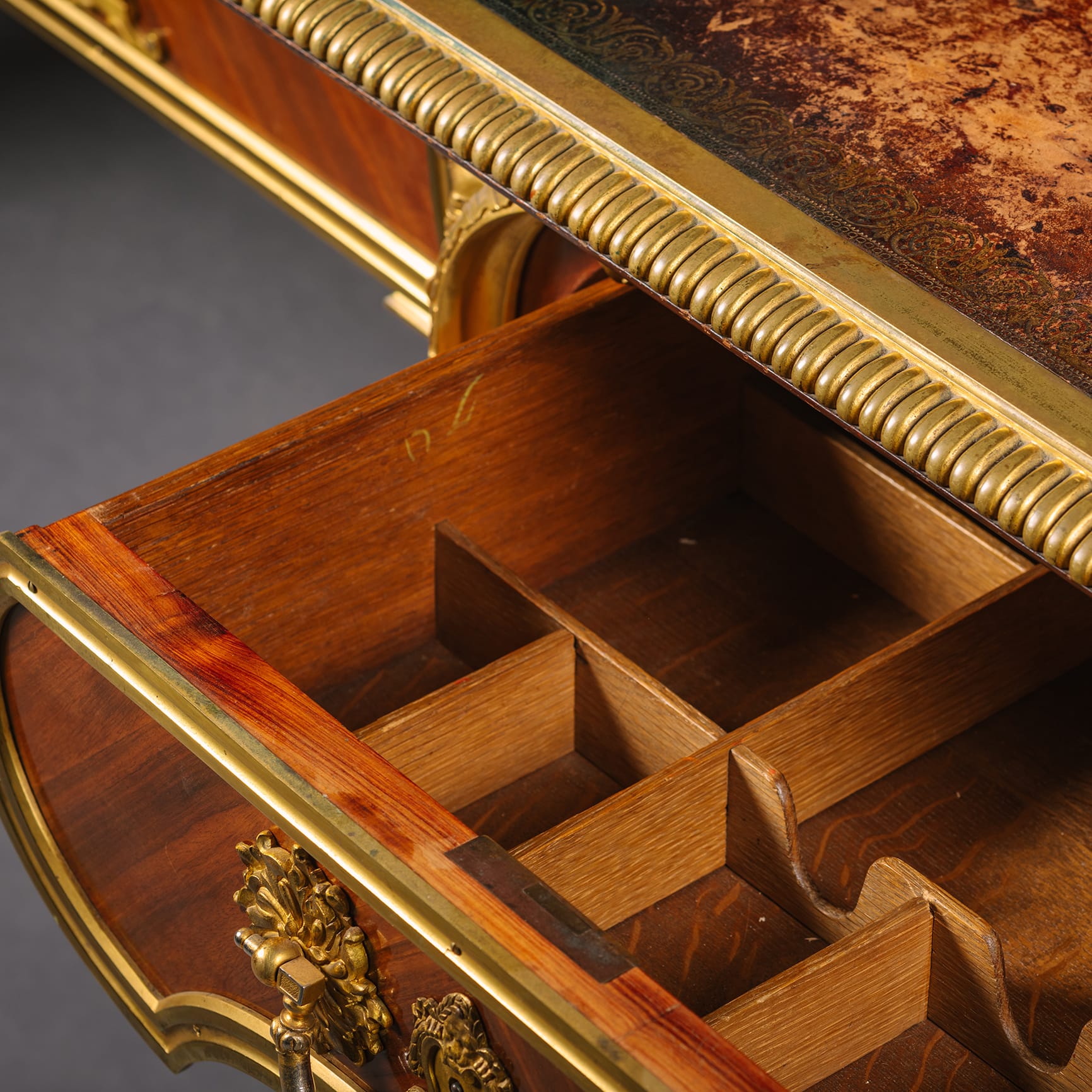
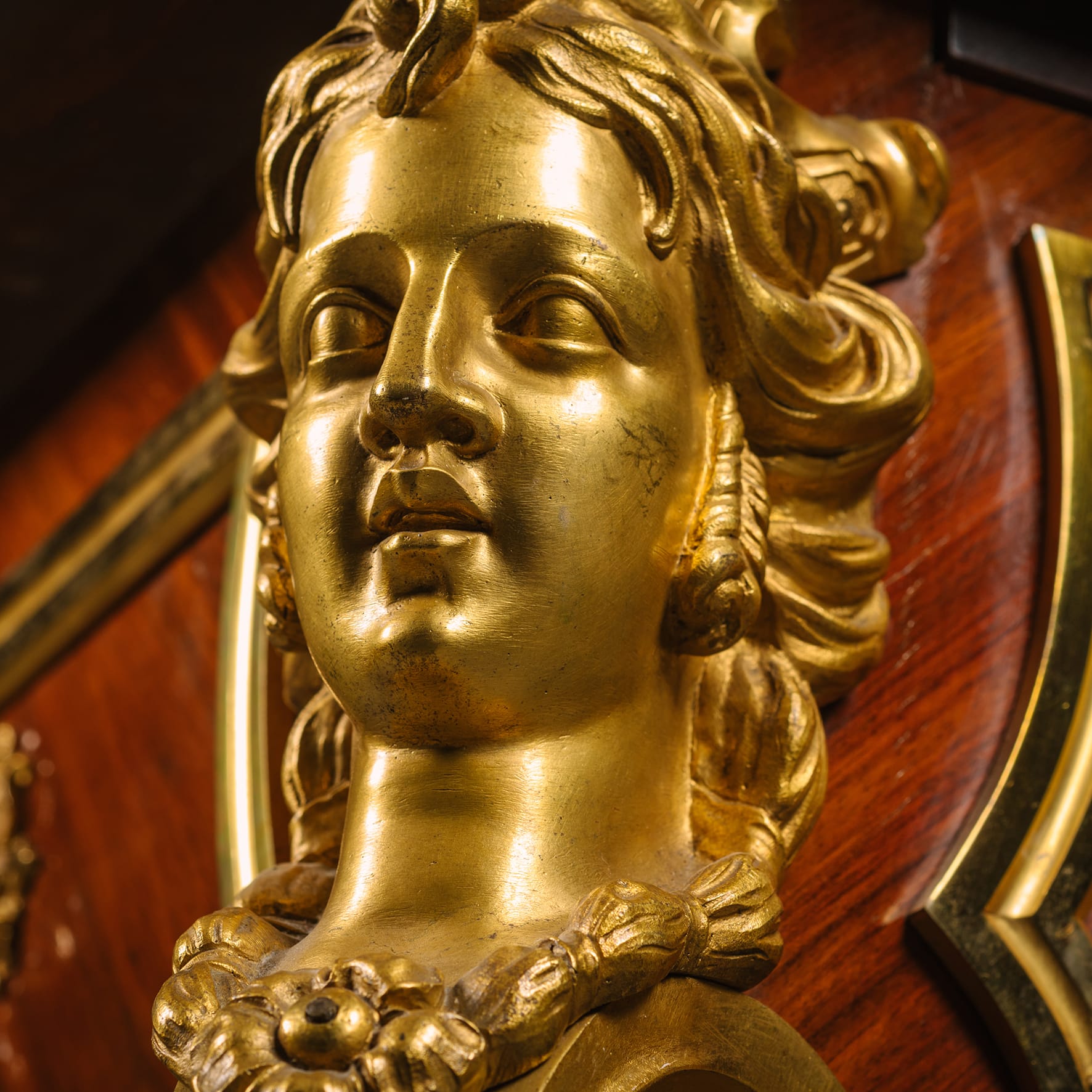
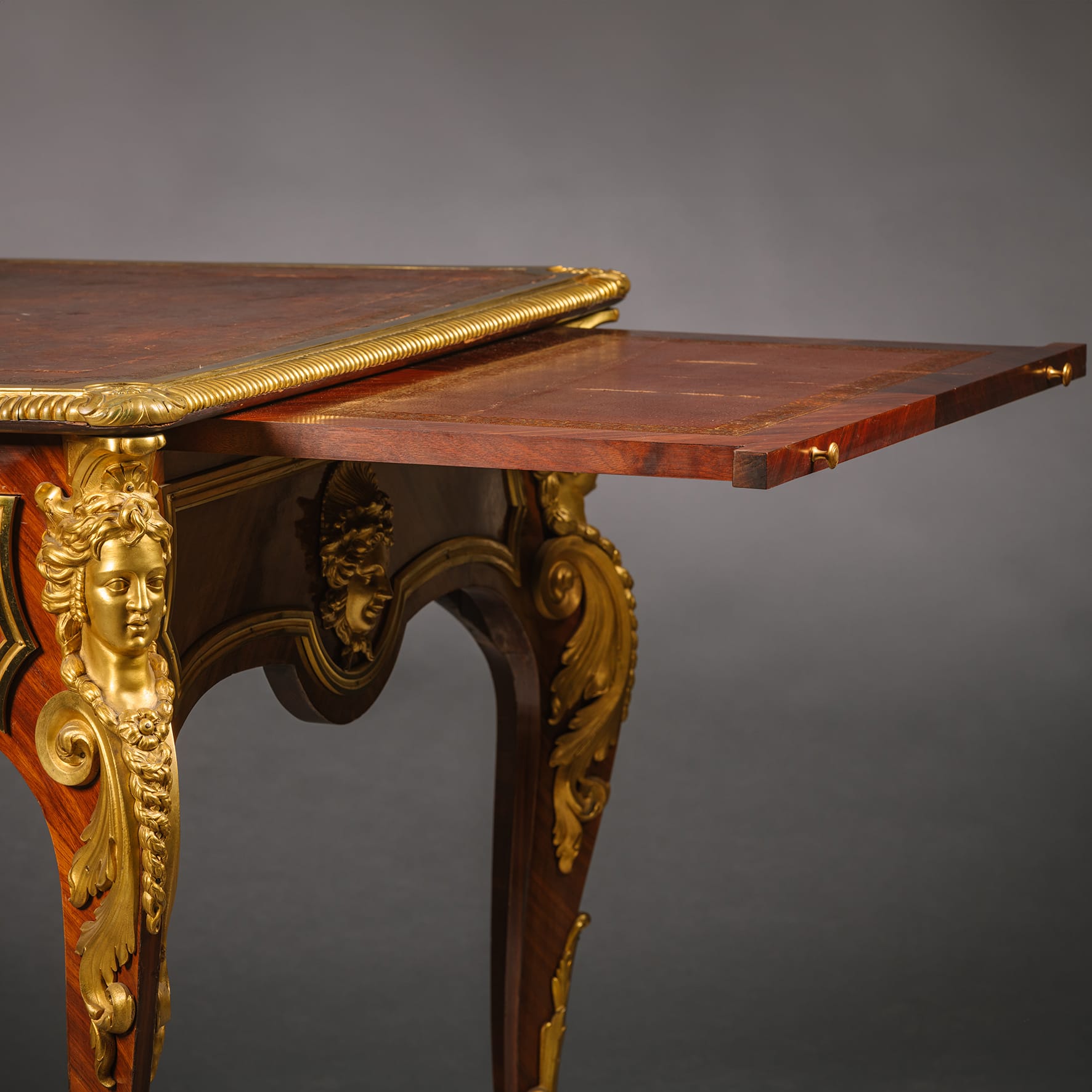
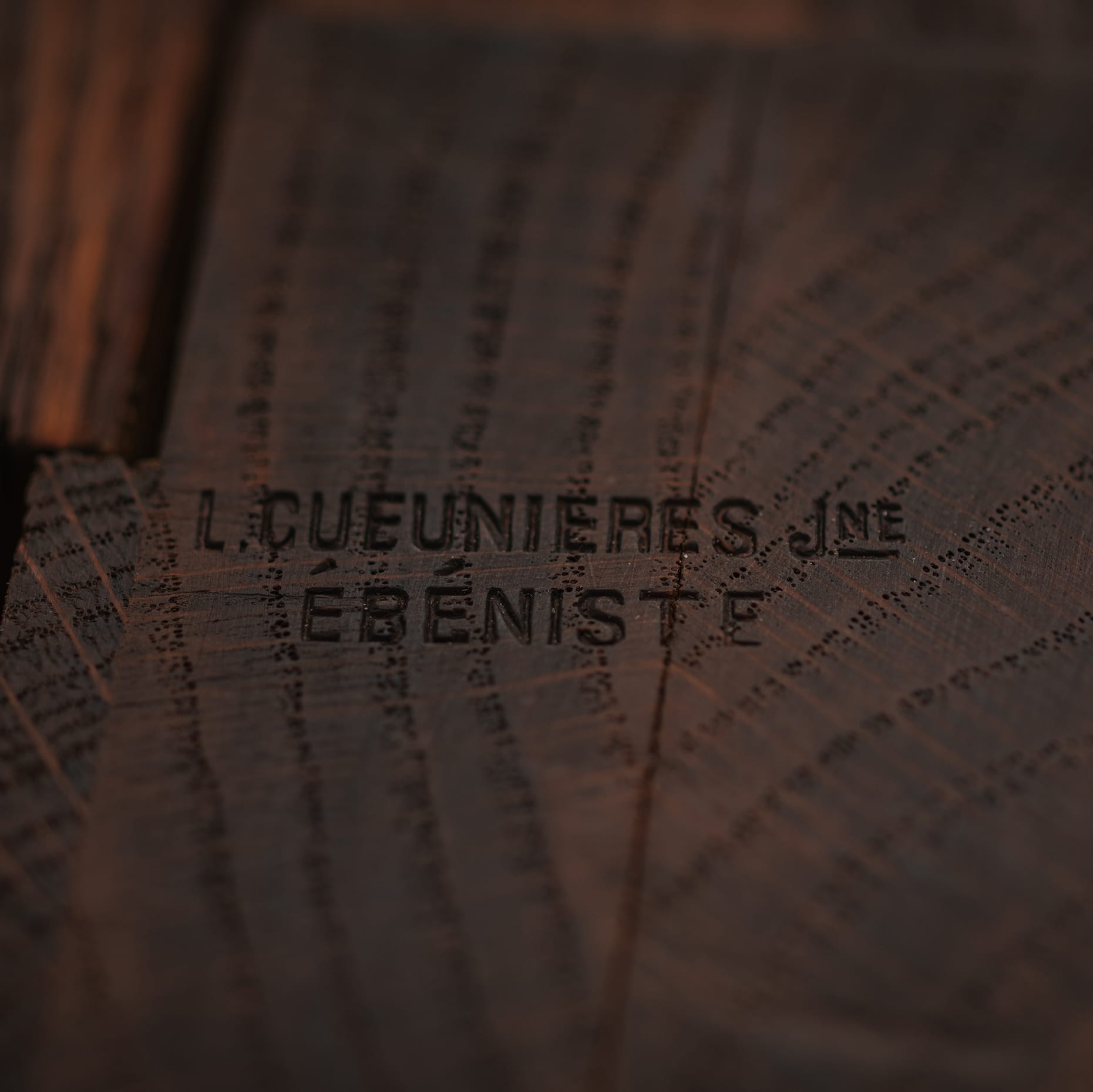

 Imprimir
Imprimir